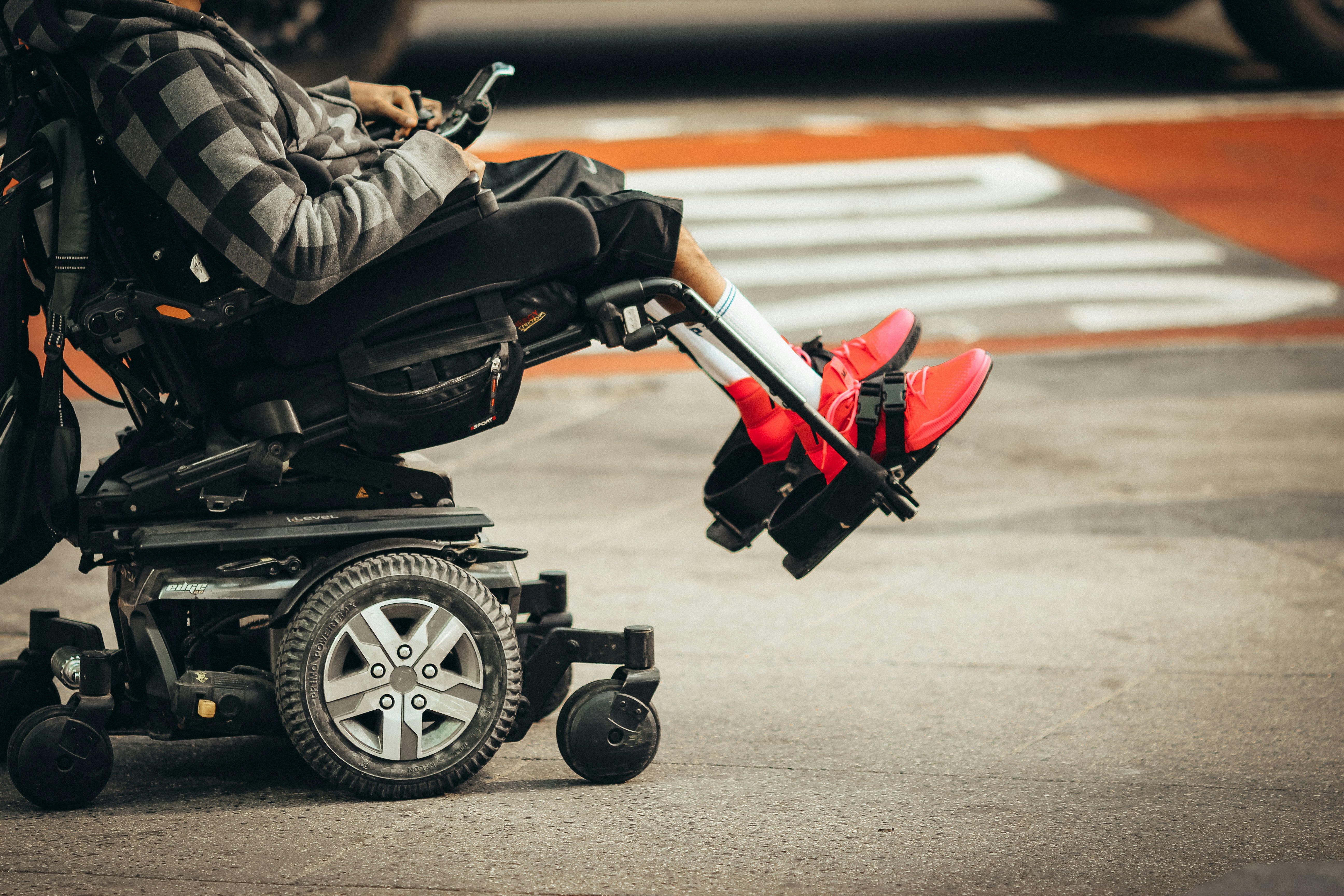Enhancing Quality Of Life With Cutting-Edge Assistive Devices

The importance of assistive devices in improving the quality of life for individuals with disabilities cannot be overstated. These technologies provide essential support, enabling users to perform daily activities with greater ease and independence. With rapid advancements, the range of available devices continues to grow, offering innovative solutions that cater to diverse needs.

Key Features Of Modern Assistive Technologies
Modern assistive technologies have various features designed to enhance user experience and effectiveness. One key feature is the incorporation of artificial intelligence (AI), which allows devices to learn from user interactions and provide personalised assistance. This means that devices can adapt to the unique needs of each user, offering a more tailored experience.
Another significant feature is connectivity. Many assistive devices can now connect to other smart devices, creating an integrated support system within the home. This connectivity allows for seamless control and monitoring, making it easier for users to manage their devices. Durability and ease of use are also crucial features. Modern devices are designed to withstand daily wear and tear while intuitively allowing users to operate without extensive training.
Types Of Cutting-Edge Assistive Devices
The variety of assistive devices available today is vast, each serving different needs. Mobility aids, such as electric wheelchairs and exoskeletons, provide enhanced movement capabilities. These devices help users navigate their environments more easily, reducing physical strain and increasing independence.
Communication devices have also seen significant advancements. Speech-generating devices, for example, enable individuals with speech impairments to communicate effectively. These devices convert text or symbols into spoken words, allowing for clearer and more efficient interaction. Home automation systems are another crucial category. These systems enable users to control various aspects of their home environment, from lighting to security, through simple commands or automated settings.
The Impact Of Assistive Devices On Daily Living
The impact of assistive devices on daily living is profound. They enable individuals to perform previously challenging or impossible tasks, fostering a sense of independence and self-sufficiency. For example, a person with limited mobility can navigate their home more easily using a motorised wheelchair or a smart home system. These devices enhance physical capabilities, boost confidence, and improve mental well-being.
Assistive devices also facilitate participation in social and professional activities. Communication aids, for instance, allow users to engage in conversations, attend meetings, and participate in group discussions. This increased engagement promotes social inclusion and professional development, enhancing overall quality of life.
The Role Of Technology In Mobility Assistance
Technology has revolutionised mobility assistance, providing unprecedented freedom and independence for individuals with mobility impairments. Electric wheelchairs, for instance, offer improved manoeuvrability and control, allowing users to easily navigate various terrains. These wheelchairs often come with features such as adjustable seating, enhanced suspension systems, and joystick controls, making them suitable for a wide range of mobility needs. Fortunately, companies like Mobility Solutions offer a range of mobility options, meaning you will likely find the one most suited to your needs.
Robotic exoskeletons are another groundbreaking development. These wearable devices enhance the user’s movement, enabling those with limited mobility to walk and climb stairs. By providing additional strength and stability, exoskeletons reduce the physical effort required for movement, decreasing fatigue and improving overall mobility.
Innovative stair-climbing wheelchairs also address one of the biggest challenges individuals with mobility impairments face. These devices use advanced technology to ascend and descend stairs safely, offering users greater access to multi-level buildings without ramps or elevators.
Innovations In Communication Aids
Communication aids have made significant strides, transforming how individuals with speech impairments interact with the world. Modern devices include speech-generating tools that convert text into spoken words, facilitating clear and effective communication. These devices are highly customisable, allowing users to select voices, languages, and even accents that suit their preferences.
Eye-tracking technology is another remarkable innovation. It enables users to control communication devices using only their eye movements. This technology is especially beneficial for individuals with severe physical disabilities, providing them with a means to communicate independently.
Additionally, advancements in voice recognition software have enhanced the functionality of communication aids. These programs can interpret and respond to vocal commands, making it easier for users to interact with their devices and access various functions without manual input.
Enhancing Independence With Home Automation Devices
Home automation devices are pivotal in enhancing independence for individuals with disabilities. These smart-systems allow users to control various aspects of their home environment through simple commands or automated settings. Lighting, heating, security systems, and even household appliances can be managed remotely, providing greater convenience and accessibility.
Voice-activated assistants are particularly beneficial. They enable users to operate their home automation systems without physical interaction, which is especially useful for those with limited mobility. These assistants can perform various tasks, from setting reminders to controlling entertainment systems, making daily life more manageable.
Automated door openers and smart locks further enhance independence by allowing users to enter and exit their homes easily. These devices can be operated via smartphone apps or voice commands, eliminating the need for physical keys and providing a secure and convenient solution.
Improving Accessibility With Smart Wearables
Smart wearables offer innovative solutions to improve accessibility and monitor health. These devices include smart glasses, wearable sensors, and health trackers designed to provide real-time assistance and feedback. Smart glasses, for example, can offer visual and auditory guidance to individuals with visual impairments, helping them navigate their surroundings safely.
Wearable sensors are particularly useful for monitoring health metrics. They can track vital signs such as heart rate, blood pressure, and oxygen levels, providing valuable data that can alert users or caregivers to potential health issues. This continuous monitoring helps manage chronic conditions and ensures timely medical intervention.
The Future Of Assistive Devices: Trends And Predictions
The future of assistive devices looks promising, with several trends indicating further advancements. AI and machine learning are expected to play a significant role, enabling devices to offer even more personalised and adaptive support. These technologies will allow assistive devices to learn from user behaviour and preferences, providing tailored assistance that evolves.
Lightweight and portable devices are also on the horizon. These innovations will make assistive technology more accessible and convenient, allowing users to carry and use their devices wherever they go. The development of 3D printing technology will likely contribute to this trend, making it possible to create customisable and affordable assistive devices.
Integration with other smart technologies is another key trend. As the Internet of Things (IoT) expands, assistive devices will increasingly connect with other smart devices, creating a cohesive and supportive environment. This integration will enhance the functionality and convenience of assistive technology, providing comprehensive solutions for users.
Choosing The Right Assistive Device For Your Needs
Selecting the right assistive device is essential for maximising its benefits. The user’s needs and preferences and the device’s features and capabilities must be considered. Consulting with healthcare professionals can provide valuable insights into the most suitable options.
Testing different devices is crucial. Users should assess the ease of use, comfort, and compatibility with other technologies. It’s also helpful to seek feedback from other users with similar needs. This can provide a realistic understanding of the device’s performance in everyday situations. Finding the perfect assistive device can significantly enhance the quality of life and independence of individuals with disabilities.
Spotted something? Got a story? Send a Facebook Message | A direct message on Twitter | Email news@north.wales






